Input interpretation

2 kg of ethanol
Basic properties for 2 kg
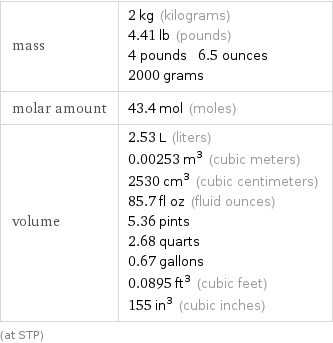
mass | 2 kg (kilograms) 4.41 lb (pounds) 4 pounds 6.5 ounces 2000 grams molar amount | 43.4 mol (moles) volume | 2.53 L (liters) 0.00253 m^3 (cubic meters) 2530 cm^3 (cubic centimeters) 85.7 fl oz (fluid ounces) 5.36 pints 2.68 quarts 0.67 gallons 0.0895 ft^3 (cubic feet) 155 in^3 (cubic inches) (at STP)
Corresponding quantities

sphere radius | 8.458 cm (centimeters) side of a cube | 0.1363 meters
Thermodynamic properties for 2 kg
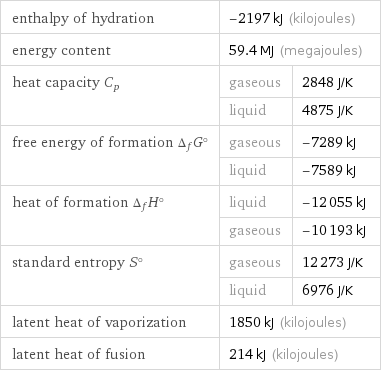
enthalpy of hydration | -2197 kJ (kilojoules) | energy content | 59.4 MJ (megajoules) | heat capacity C_p | gaseous | 2848 J/K | liquid | 4875 J/K free energy of formation Δ_fG° | gaseous | -7289 kJ | liquid | -7589 kJ heat of formation Δ_fH° | liquid | -12055 kJ | gaseous | -10193 kJ standard entropy S° | gaseous | 12273 J/K | liquid | 6976 J/K latent heat of vaporization | 1850 kJ (kilojoules) | latent heat of fusion | 214 kJ (kilojoules) |
Units

Energy vs. temperature for 2 kg
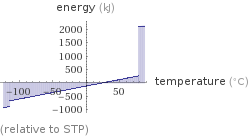
(relative to STP)
Units

Phase change energies for 2 kg from 25 °C
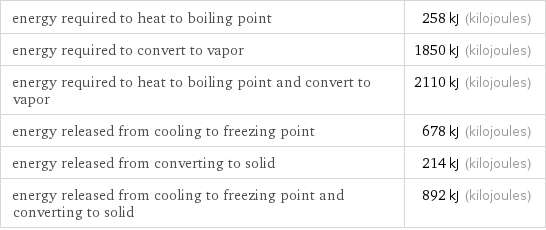
energy required to heat to boiling point | 258 kJ (kilojoules) energy required to convert to vapor | 1850 kJ (kilojoules) energy required to heat to boiling point and convert to vapor | 2110 kJ (kilojoules) energy released from cooling to freezing point | 678 kJ (kilojoules) energy released from converting to solid | 214 kJ (kilojoules) energy released from cooling to freezing point and converting to solid | 892 kJ (kilojoules)
Mass composition for 2 kg
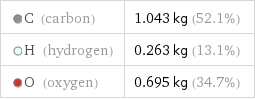
C (carbon) | 1.043 kg (52.1%) H (hydrogen) | 0.263 kg (13.1%) O (oxygen) | 0.695 kg (34.7%)

Mass composition for 2 kg
Lewis structure

Draw the Lewis structure of ethanol. Start by drawing the overall structure of the molecule: Count the total valence electrons of the carbon (n_C, val = 4), hydrogen (n_H, val = 1), and oxygen (n_O, val = 6) atoms: 2 n_C, val + 6 n_H, val + n_O, val = 20 Calculate the number of electrons needed to completely fill the valence shells for carbon (n_C, full = 8), hydrogen (n_H, full = 2), and oxygen (n_O, full = 8): 2 n_C, full + 6 n_H, full + n_O, full = 36 Subtracting these two numbers shows that 36 - 20 = 16 bonding electrons are needed. Each bond has two electrons, so the above diagram has all the necessary bonds. There are 8 bonds and hence 16 bonding electrons in the diagram. Lastly, fill in the remaining unbonded electrons on each atom. In total, there remain 20 - 16 = 4 electrons left to draw: Answer: | |
Chemical names and formulas
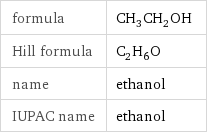
formula | CH_3CH_2OH Hill formula | C_2H_6O name | ethanol IUPAC name | ethanol